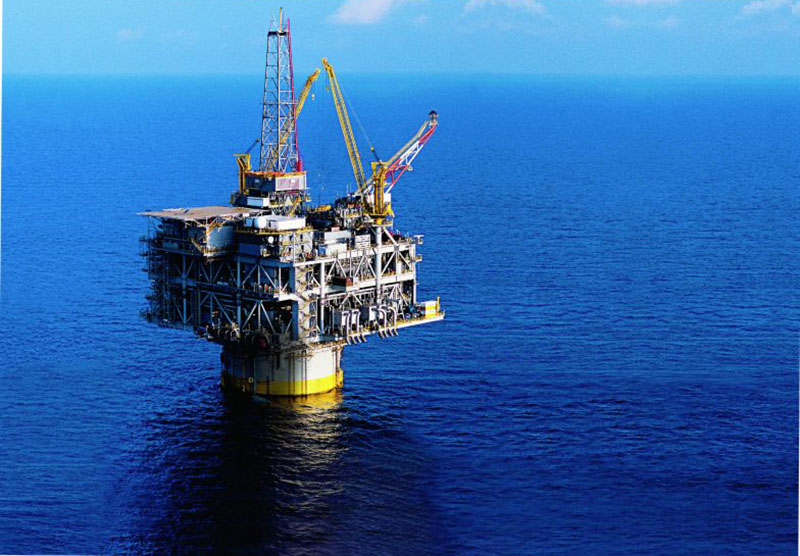(Bloomberg) — Exxon Mobil Corp. and Chevron Corp. missed profit and production estimates as wildfires, writedowns and weak refining margins battered oil explorers already reeling under a glut-driven price collapse.
Exxon’s $1.7 billion second-quarter profit was its lowest since the first quarter of 1999, before the Mobil Corp. acquisition. The 41-cent-per-share result was 23 cents lower than the average estimate by analysts in a Bloomberg survey, the biggest miss in at least a decade. Chevron posted a surprise loss of $1.47 billion, or 78 cents a share, compared with profit of $571 million a year earlier, after booking a $2.8 billion writedown on assets. Analysts had expected the company to earn anywhere from 19 to 41 cents a share.
Exxon and Chevron followed Royal Dutch Shell Plc and BP Plc in posting lower profits as crude’s collapse continued to batter the industry. Crude prices dropped during the quarter from a year ago amid a global glut. With diesel and gasoline prices also slumping, the companies were deprived of the tempering effect oil refining typically provides during times of low crude prices.
Given the plunge in crude and natural gas markets, “you cannot recover no matter how efficient you are,” Fadel Gheit, an analyst at Oppenheimer & Co., said during an interview with Bloomberg Television. “The industry cannot survive on current oil prices.”
Margins from refining oil into fuels at U.S. refineries, based on futures contracts, plunged 30% to a second-quarter average of $17.12 a barrel from $24.42 a year earlier.
Shell reported its weakest quarterly result in 11 years and missed analysts’ estimates by more than $1 billion. BP said earnings tumbled 45% as poor refining margins exacerbated the impact of falling oil prices.
Exxon and Chevron also underperformed in the oil patch. Exxon’s wells pumped the equivalent of 3.957 million barrels a day during the quarter, according to a statement on Friday, almost 3% below the 4.069-million average of four analyst estimates. Chevron’s 2.528 million barrels was 3.4% below estimates.
Output Hurt
Exxon, the world’s biggest oil explorer by market value, said wildfires that ravaged the oil-sands region of western Canada as well as aging wells reduced output. Exxon’s U.S. oil and natural gas wells lost an average of $5.6 million a day during the quarter.
“While our financial results reflect a volatile industry environment, Exxon Mobil remains focused on business fundamentals, cost discipline and advancing selective new investments across the value chain to extend our competitive advantage,” Rex W. Tillerson, chairman and chief executive officer, said in the statement.
Chevron Chairman and CEO John Watson said the company continues to adjust to the lower-price environment. “In our upstream business, we recorded impairment and other charges on certain assets where revenue from expected oil and gas production is expected to be insufficient to recover costs,” he said in the statement.
It was Chevron’s third straight quarterly loss, the longest slump for the company since at least 1989, according to data compiled by Bloomberg.
Exxon shares slumped 2.3% to $88.11 as of 11:39 a.m. in New York. Chevron fell 0.2% to $101.61.
Imperial Oil Ltd., Exxon’s Canadian affiliate, reported a loss of C$181 million ($138 million) in the second quarter from a profit a year earlier. The wildfires forced Imperial to shut in production, resulting in 60,000 barrels per day of lost output, the company said.
Growth Plans
Tillerson has been looking beyond the current downturn in energy markets to augment the company’s gas and oil portfolios from the South Pacific to Africa. The company also is plowing money into expanding refining and chemical complexes from Singapore to The Netherlands, betting that regional demand for products used in automobile tires, engine oil and plastics will grow over the long term.
Exxon agreed last week to pay as much as $3.6 billion for Papua New Guinea-focused gas explorer InterOil Corp. The final price is dependent on how much gas resides in InterOil’s Elk-Antelope field. Exxon already operates a $19 billion plant on the Papuan coast that liquefies gas for export on tankers.
Watson has responded to the market-driven cash squeeze by shrinking drilling programs, writing off discoveries that were too costly to develop at current prices and firing one-tenth of the workforce. The company is seeking to bolster its balance sheet by raising $5 billion to $10 billion from asset sales.
Despite the rout, and credit-rating cuts by S&P Global Ratings and Moody’s Investors Service, Chevron greenlighted a $36.8 billion expansion of a key Central Asian oilfield earlier this month. This week, the company committed to distribute a $1.07-a-share dividend that will eat up about $2 billion in cash when paid out to investors in September.
Bloomberg News by Joe Carroll




